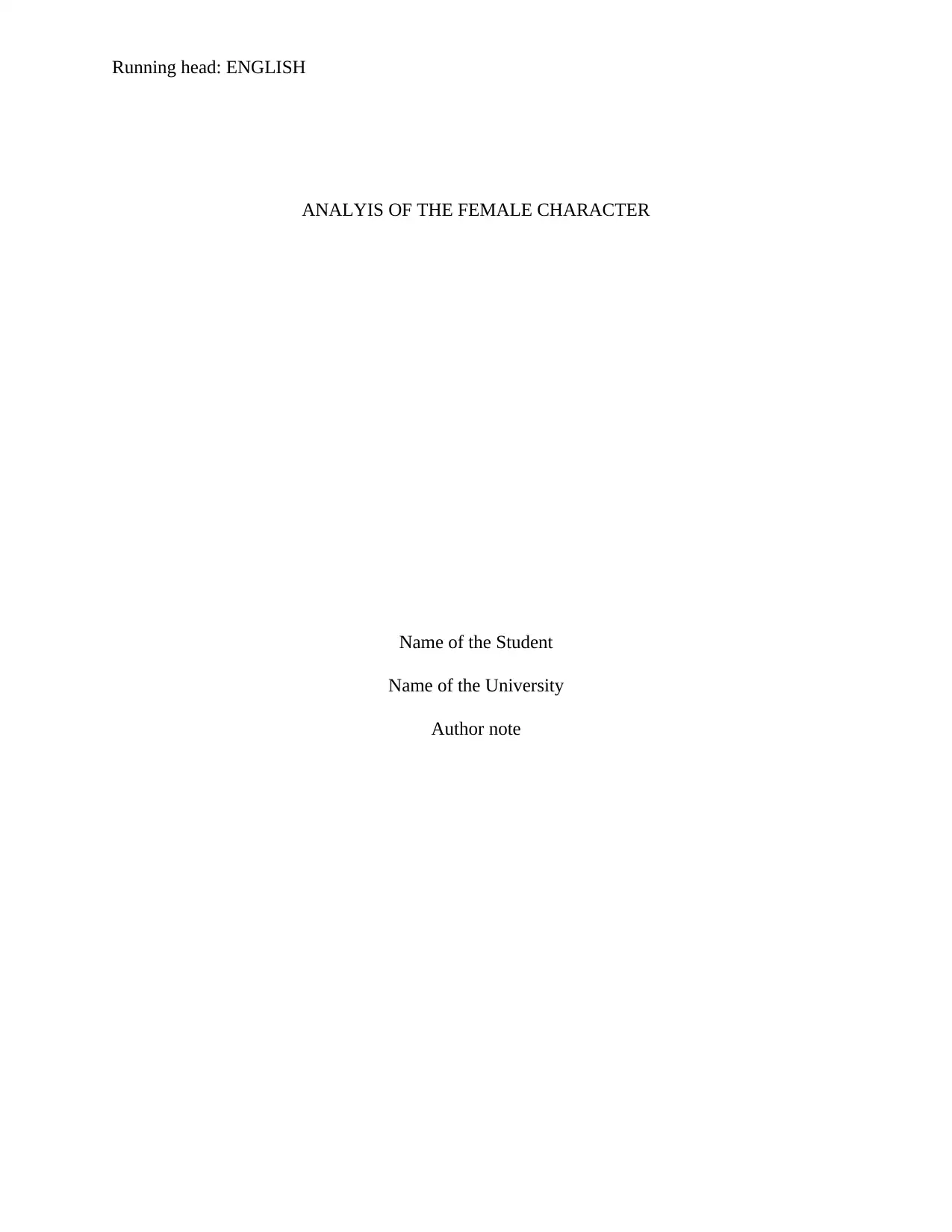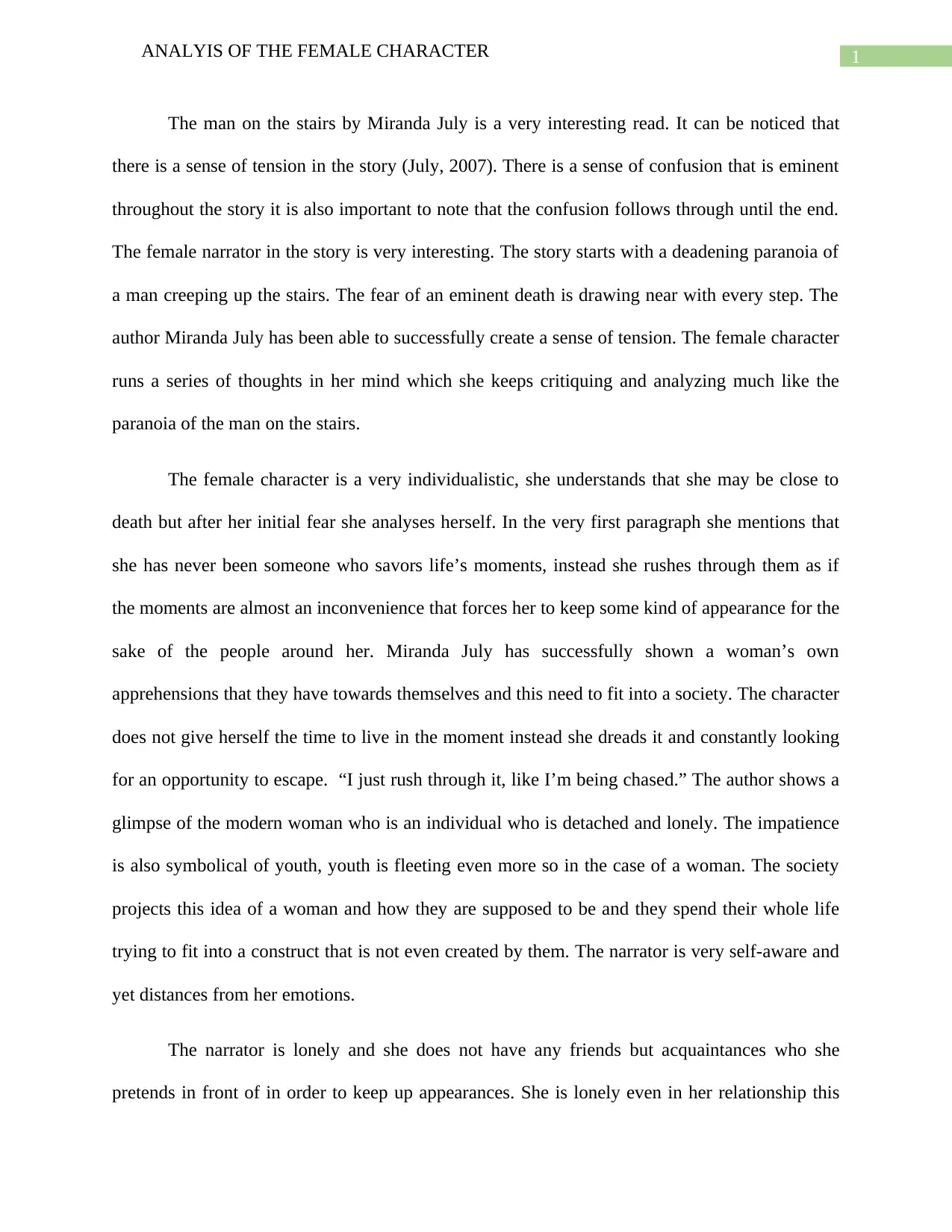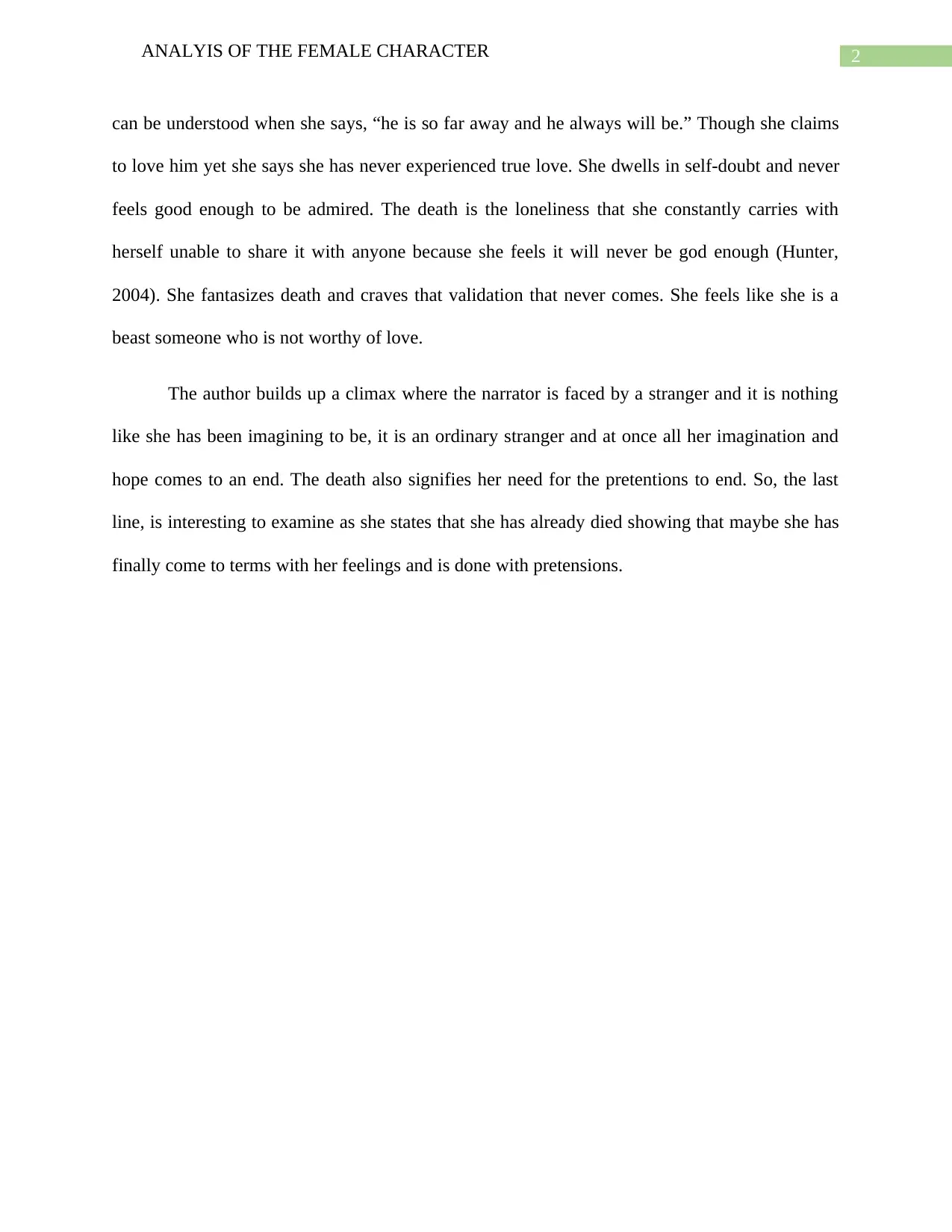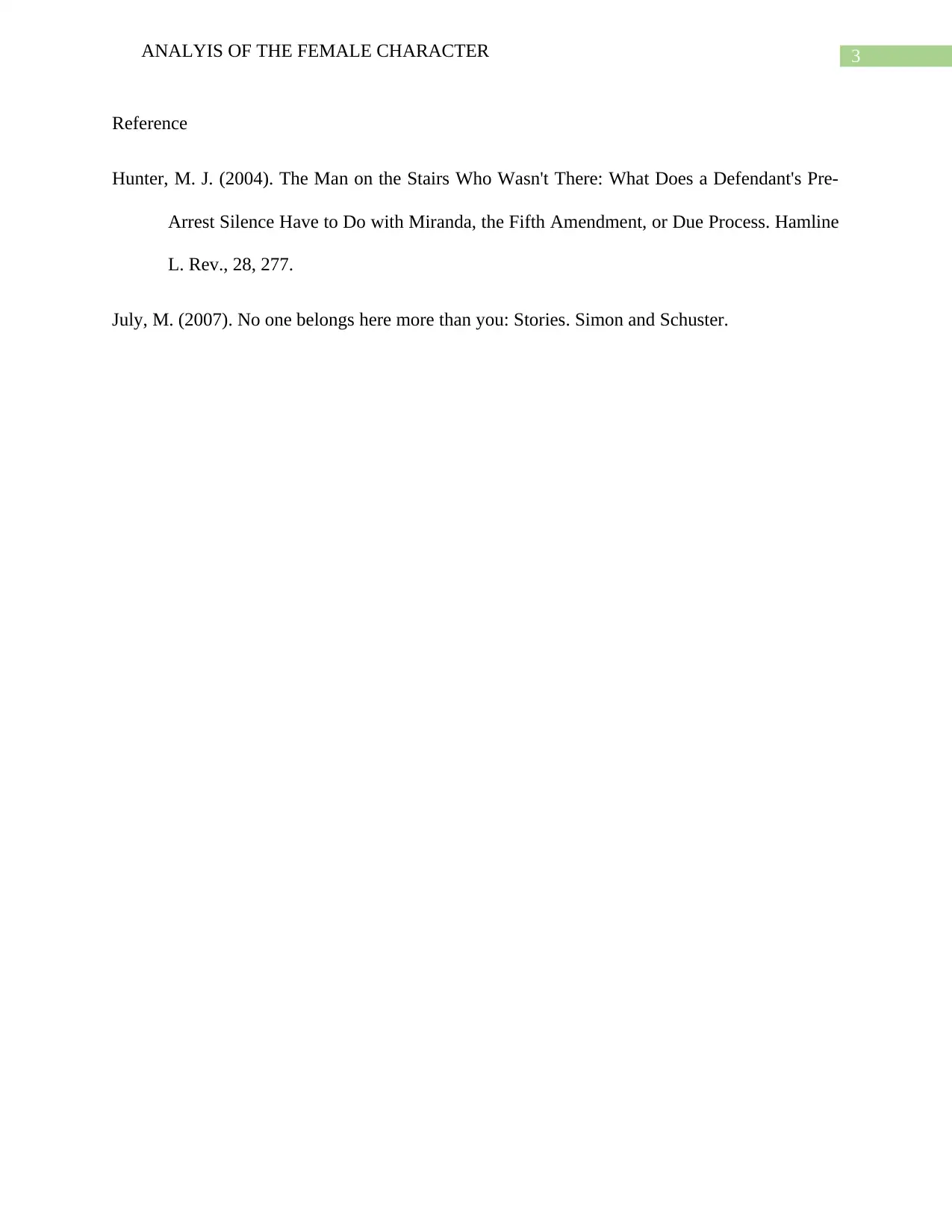Essay: Analysis of the Female Character in Literature
VerifiedAdded on 2022/08/15
|4
|705
|14
Essay
AI Summary
This essay provides a comprehensive analysis of the female character in Miranda July's short story, 'The Man on the Stairs.' The analysis delves into the narrator's individualistic nature, her internal conflicts, and the societal pressures she faces. It examines the themes of paranoia, loneliness, self-doubt, and the character's struggle to fit into societal expectations. The essay highlights the narrator's detachment from her emotions, her relationship with others, and her yearning for validation. Furthermore, it explores the climax of the story, where the narrator confronts a stranger, and how this encounter affects her perceptions. The essay also touches upon the symbolism of death and the narrator's eventual acceptance of her feelings. The author references Hunter (2004) and July (2007) to support the arguments presented in the analysis.
1 out of 4











![[object Object]](/_next/static/media/star-bottom.7253800d.svg)